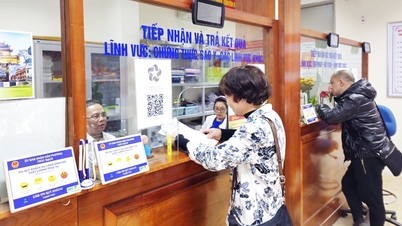Caught in the "trap" of cryptocurrency
Recently, countless cryptocurrency projects have been accused of fraud and the authorities have stepped in to clarify the fraudulent acts. For example, on August 21, Hanoi City Police dismantled a group of subjects issuing and promoting investment in cryptocurrency projects related to Dang Quoc Thang (born in 1986, residing in Hanoi).
Thang established Maxx Group Company to introduce and call for investment in many projects, including “Wingstep” and “Game Naga Kingdom”, mobilizing up to 7.86 million USD from more than 3,000 investor accounts. The Wingstep project operated from May to August 2022, then lost liquidity, investors could not withdraw money, and all the money was appropriated.
Previously, on August 12, Phu Tho Provincial Police dismantled an illegal multi-level marketing criminal group, operating in the form of buying and selling cryptocurrency called PaynetCoin (PAYN), mobilizing billions of USD from people at home and abroad. Initial investigation results show that since 2021, the subjects have programmed to create the cryptocurrency PaynetCoin (PAYN) on the Blockchain platform, building a reward system according to the pyramid model. Participants who register to buy investment packages will be promised interest payments of 5% -9% per month, depending on the investment level.
The case that shocked public opinion, of course, had to mention Mr. Pips - Pho Duc Nam - an influential TikToker, identified as the largest asset fraud ring in Vietnam with the amount of money seized up to more than 5,300 billion VND. After appropriating money from the victims, Nam and his accomplices used part of this money to buy USDT cryptocurrency (a type of stablecoin) and gold to convert assets, in order to conceal the origin of the crime and disperse it abroad. The police agency identified and seized the "Cold Wallet" related to the ring, confirming the use of cryptocurrency as a channel to store illegal assets.

Currently, public opinion is paying special attention to the AntEx cryptocurrency project, which is said to be related to Mr. Nguyen Hoa Binh (Shark Binh). The incident has not yet come to an end, but in the latest development, on the afternoon of October 6, at the press conference of the Ministry of Public Security, Colonel Nguyen Duc Long, Deputy Director of Hanoi City Police, said that recently on social networks and some press agencies, information appeared that many people lost money when participating in the AntEx project.
The authorities have released some information related to the case. In 2021, through the Next100Blockchain fund, Mr. Nguyen Hoa Binh invested 2.5 million USD in AntEx, a highly advertised DeFi project. But shortly after, the AntEx token lost 99% of its value, and its website and communication channels disappeared. By 2023, the project changed its name to Rabbit (RAB) at a rate of 1,000 ANTEX = 1RAB, but the new token also plummeted 95% from its peak, almost losing everything.
According to Mr. Phan Duc Trung, Chairman of the Vietnam Blockchain and Digital Asset Association, the damage caused by cybercrime in 2024 is about 9.3 billion USD, in which the Asia-Pacific region, including Vietnam, is a hot spot with thousands of transactions suspected of being related to fraud and money laundering. In Vietnam, the estimated damage is up to more than 12,000 billion VND, according to a report by the Department of Cyber Security and Prevention of High-Tech Crime - A05 (Ministry of Public Security).
XUAN QUYNH
“Fertile land” for cybercrime
Along with investment project scams, cryptocurrency-related crimes such as asset theft and e-wallet hijacking are also on the rise. According to security firm Kaspersky, since 2022, its applications have detected nearly 200,000 attempts to steal cryptocurrency and e-wallet information. To date, the number of recorded cases has increased dozens of times, showing the widespread and sophisticated level of this type of crime.
According to a report by Netcraft - a UK-based cybersecurity organization that monitors and prevents online fraud - published on September 17, the two gangs Lighthouse and Lucid operated a large-scale fraud service, creating 17,500 fake domains of 316 brands in 74 countries in 2025. One of the common tricks is to spread fake cryptocurrency wallet applications such as Trust Wallet, MetaMask, OKX, Coinbase or PancakeSwap to steal login codes and appropriate users' assets.
“The channels and websites that users trust and use the most are the places where scammers exploit the most. In today's digital life, smartphones and familiar means of communication such as calls, SMS messages, or messaging applications such as Facebook Messenger, Zalo, Telegram... can all become traps if users are not vigilant,” said Mr. Ngo Tran Vu, Director of NTS Security Company, about the common tricks today.
According to the State of Southeast Asia Fraud Report 2025, conducted by the Global Anti-Fraud Alliance (GASA) in collaboration with ScamAdviser and BioCatch, digital fraud has escalated to a “crisis” level. The financial damage caused by this form of crime is huge, up to 23.6 billion USD, with an average loss per victim of about 660 USD, of which cryptocurrency-related fraud also accounts for a significant proportion.
Kaspersky security experts say that users must carefully research information before deciding to participate in any project advertised to apply blockchain technology. Many fraudulent projects are currently impersonating blockchain applications to trap users. This is just a simple social engineering scam but is easy to attract because it "hits" users' desire to make easy money. Even projects with blockchain applications are not necessarily absolutely safe.
Identifying scam patterns
Project clones (imitating, impersonating): These projects will take advantage of the FOMO (fear of missing out) mentality with the project team's goal of raising as much capital as possible and then disappearing. These projects launch systematically, declaring to build e-wallets, exchanges, private blockchains, issue tokens, build payment systems... But when they have raised a huge amount of capital, the project team also disappears without caring how much the token has decreased.
Projects promising huge profits: The method is similar to project clones but not imitating or disguising the project. These projects advertise abnormal profits to attract investors to hold tokens for a long time. The strategy is to encourage buying and holding until the amount of money raised is large enough - then the project owner "dumps" (rug pull) or sells, causing investors to suffer heavy losses.
Multi-level marketing project disguised as cryptocurrency: This group of projects operates based on the story of high profits and profit sharing tower. After the f1 generation is born, the project will start to open the commission feature that allows old customers to enjoy profits when inviting new customers. Like that, this system will operate until there are no more new customers, then there will be no more money to pay profits to customers.
Source: https://www.sggp.org.vn/canh-bao-lua-dao-tien-ma-hoa-post817027.html





![[Photo] Unique Phu Gia horse hat weaving craft](https://vphoto.vietnam.vn/thumb/1200x675/vietnam/resource/IMAGE/2025/10/10/1760084018320_ndo_br_01-jpg.webp)
![[Photo] Ho Chi Minh City is brilliant with flags and flowers on the eve of the 1st Party Congress, term 2025-2030](https://vphoto.vietnam.vn/thumb/1200x675/vietnam/resource/IMAGE/2025/10/10/1760102923219_ndo_br_thiet-ke-chua-co-ten-43-png.webp)
![[Photo] Opening of the World Cultural Festival in Hanoi](https://vphoto.vietnam.vn/thumb/1200x675/vietnam/resource/IMAGE/2025/10/10/1760113426728_ndo_br_lehoi-khaimac-jpg.webp)



































































































Comment (0)